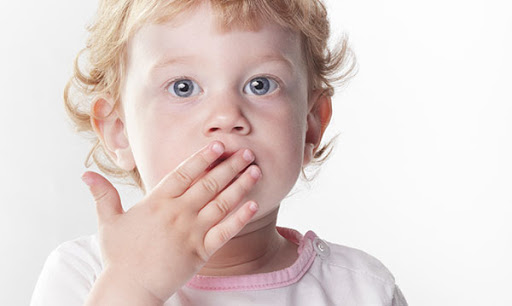Children with autism spectrum disorder (ASD) usually show developmental differences at an early stage — even when they are babies. The noticeable differences especially come up in their social and language skills, such as how their child interacts with peers and others.
Here are some examples of early behavioural differences seen in autistic kids.
Social differences in children with Autism

- May not keep eye contact or make little or no eye contact
- Shows very little response to the parent’s facial expressions like smiles or frowns
- May not look at objects that the parent is pointing to
- Doesn’t point to things or events to get a parent to look at them
- Less likely to show items that are of the child’s personal interest to the parent
- Many children may not have appropriate facial expressions and therefore have difficulty understanding what the people around them might be feeling by looking at their facial expressions
- Less likely to show concern or empathy for others and thus face a difficulty making and keeping friends
- Appears disinterested or unaware of other people or what’s going on around them.
- Doesn’t know how to connect with others, play, or make friends.
- Prefers not to be touched, held, or cuddled.
- Doesn’t play “pretend” games, engage in group games, imitate others, or use toys in creative ways.
- Has trouble understanding feelings or talking about them.
- Doesn’t seem to hear when others talk to them.
- Doesn’t share interests or achievements with others (drawings, toys)
Communication differences in children with Autism

- Less likely to point at things to indicate needs or share things with others
- Says no single words by 15 months or 2-word phrases by 24 months
- Repeats exactly what others say without understanding the meaning (often called parroting or echoing)
- May not respond to name being called but does respond to other sounds (like a car horn or a cat’s meow)
- May refers to self as “you” and others as “I” and may mix up pronouns
- May show no or less interest in communicating
- Less likely to start or continue a conversation
- Less likely to use toys or other objects to represent people or real life in pretend play
- May have a good rote memory, especially for numbers, letters, songs, TV jingles, or a specific topic
- May lose language or other social milestones, usually between the ages of 15 and 24 months (often called regression)
- Speaks in an atypical tone of voice or with an odd rhythm or pitch (e.g. ends every sentence as if asking a question).
- Repeats the same words or phrases over and over, often without communicative intent
- Have a difficulty in communicating their own needs or desires
- Doesn’t easily understand simple directions, statements, or questions that are asked of them
- Takes things too literally (misses undertones of humor, irony, and sarcasm)
Repetitive & obsessive behaviors in children with Autism

- Rocks, spins, sways, twirls fingers, walks on toes for a long time, or flaps hands (called “stereotypic behavior”)
- Likes routines, order, and rituals; has difficulty with change or transition from one activity to another
- May be obsessed with a few or unusual activities, doing them repeatedly during the day
- Plays with parts of toys instead of the whole toy (e.g., spinning the wheels of a toy truck)
- May not cry if in pain or seem to have any fear
- May be very sensitive or not sensitive at all to smells, sounds, lights, textures, and touch
- May have unusual use of vision or gaze—looks at objects from unusual angles Avoids eye contact.
- Uses facial expressions that don’t match what they are saying
- Doesn’t pick up on other people’s facial expressions, tone of voice, and gestures.
- Makes very few gestures (such as pointing). May come across as cold or “robot-like.”
- Reacts unusually to sights, smells, textures, and sounds. Maybe especially sensitive to loud noises. Can also be unresponsive to people entering/leaving, as well as efforts by others to attract the child’s attention.
- Atypical posture, clumsiness, or eccentric ways of moving (e.g., walking exclusively on tiptoe).
Common restricted and repetitive behaviors

- Hand flapping
- Rocking back and forth
- Spinning in a circle
- Finger flicking
- Head banging
- Staring at lights
- Moving fingers in front of the eyes
- Snapping fingers
- Tapping ears
- Scratching
- Lining up toys
- Spinning objects
- Wheel Spinning
- Watching moving objects
- Flicking light switches on and off
- Repeating words or noises
Signs of inflexibility
- Follows a rigid routine (e.g., insists on taking a specific route to school).
- Has difficulty adapting to any changes in schedule or environment (e.g., throws a tantrum if the furniture is rearranged or bedtime is at a different time than usual).
- Unusual attachments to toys or strange objects such as keys, light switches, or rubber bands. Obsessively lines things up or arranges them in a certain order.
- Comfirtable spending long periods of time watching moving objects like ceiling fans, washing machines or wheels of a toy
- Repeats similar actions or movements over and over again. Examples: flapping hands, rocking, or twirling (known as self-stimulatory behavior, or “stimming”)
Check out our blog on What to do if your child has Autism.
https://childgood.in/worried-that-your-child-has-autism/

